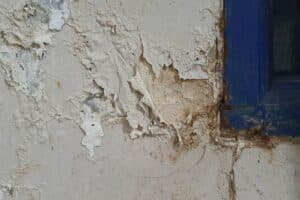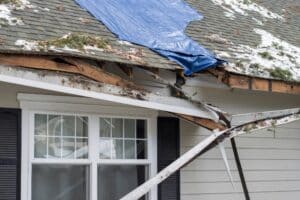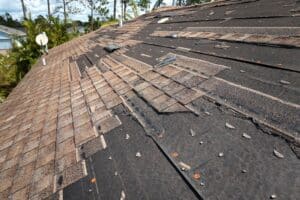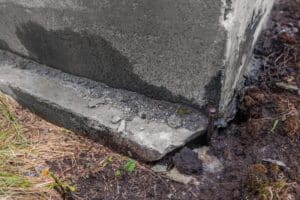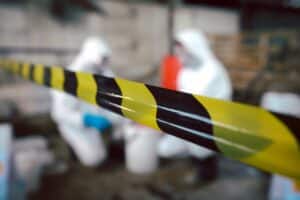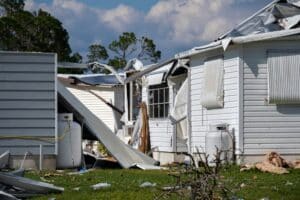Utah weather has a way of keeping homeowners on their toes. One day it’s sunny and calm, and the next, you’re watching wind, rain, or hail pound against your roof and windows. While a storm might last only a few hours, the damage it leaves behind can cause lasting trouble—especially if not addressed quickly.
Storm damage isn’t always dramatic, like a fallen tree or a broken window. Sometimes it’s subtle—small leaks, loosened shingles, or cracks that widen over time. To protect your home and avoid costly repairs, it’s important to know how different types of storm damage occur and what steps to take immediately afterward.
Wind Damage
High winds are among the most common causes of home damage during storms. They can lift roof shingles, tear away flashing, and send debris crashing into siding, windows, and fences. Even winds below hurricane strength can compromise the integrity of your roof if it’s already aged or poorly maintained.
What it looks like:
- Missing or curled shingles
- Bent or detached gutters
- Loose siding or cracked windows
- Fallen branches or toppled fences
Wind damage often sets off a chain reaction—once roofing materials are lifted or torn, water can find its way inside. A small breach may not seem serious, but it can lead to leaks, mold, and structural deterioration over time.
What to do:
After a storm, walk your property carefully. If you see roof shingles in the yard or any debris damage, call a professional for inspection before attempting temporary fixes. Avoid climbing onto your roof—it’s safer and smarter to let experts handle it.
Hail Damage
Hail is notorious for being sneaky. Even small hailstones can cause significant impact damage, especially to roofing materials, gutters, and siding. The tricky part is that the damage isn’t always visible right away. Granule loss on asphalt shingles, for example, might not look severe initially but can shorten the roof’s lifespan and lead to leaks months later.
What it looks like:
- Dents or pockmarks on shingles, flashing, or metal surfaces
- Damaged gutters or downspouts
- Cracked windows or skylights
- Chipped paint and siding
What to do:
Take photos immediately after the storm, even if you don’t see major damage. These can help with insurance claims later. Then, schedule a professional roof inspection—especially if your neighborhood experienced hail. What you can’t see from the ground could still be costing you long-term protection.
Water Damage
Water damage is one of the most destructive—and expensive—results of storms. Heavy rain can overwhelm gutters and drainage systems, sending water into basements, crawl spaces, or walls. Once inside, moisture can warp wood, damage drywall, and create ideal conditions for mold growth.
What it looks like:
- Ceiling stains or bubbling paint
- Damp or musty smells
- Pooled water in basements or around the foundation
- Warped floors or sagging drywall
What to do:
Act fast. The longer water sits, the more damage it causes. Shut off electricity in affected areas, remove wet materials if safe, and call a restoration team right away. Professionals have drying equipment and moisture meters to prevent deeper structural issues.
For reliable help, turn to trusted storm damage restoration Salt Lake City specialists who can assess and repair the problem before it worsens.
Debris and Falling Objects
Strong storms can turn everyday outdoor items—like patio furniture, branches, or even loose signage—into projectiles. Debris can crack windows, puncture siding, and damage roofs or gutters. Heavy branches that land on your home may also compromise framing or the roof structure itself.
What it looks like:
- Impact marks on siding or roofing
- Broken windows
- Structural sagging where large branches fell
- Clogged gutters filled with leaves or debris
What to do:
Remove debris carefully, only if it’s safe. Avoid touching or cutting large limbs that may have compromised your roof or power lines. Contact your utility provider if electrical lines are down, and call restoration professionals for a full safety inspection before making repairs.
Immediate Steps to Take After a Storm
When the sky clears, it’s easy to want to move on—but taking a few smart steps right away can save you from bigger headaches later.
Document everything. Take photos and videos of any visible damage for insurance purposes.
Protect against further damage. If it’s safe, cover broken windows or roof openings with tarps or plywood.
Avoid unsafe areas. Stay clear of standing water near outlets or damaged electrical systems.
Call professionals quickly. Restoration experts can assess hidden damage and start the drying or repair process immediately.
File your insurance claim. Provide documentation and repair estimates promptly to avoid delays.
Why Professional Restoration Matters
Even small amounts of storm damage can grow into major issues if not handled correctly. Moisture trapped inside walls can lead to mold, while unseen roof leaks can rot structural beams over time. That’s why homeowners should never rely solely on surface inspections.
Professional restoration teams have the tools and training to detect what the eye can’t see—moisture behind walls, compromised framing, or hidden electrical hazards. They not only repair the visible damage but ensure your home is completely safe, dry, and structurally sound.
Protect Your Home with Black Diamond Restoration
Utah’s weather can change in an instant—but your home’s safety doesn’t have to. When severe weather hits, trust Black Diamond Restoration for prompt, professional response and complete recovery. From water extraction and mold prevention to full roof and structure repair, their team restores peace of mind along with your property.
Whether you’re dealing with wind, hail, or flooding, Black Diamond Restoration provides expert storm damage restoration in Salt Lake City you can depend on.


